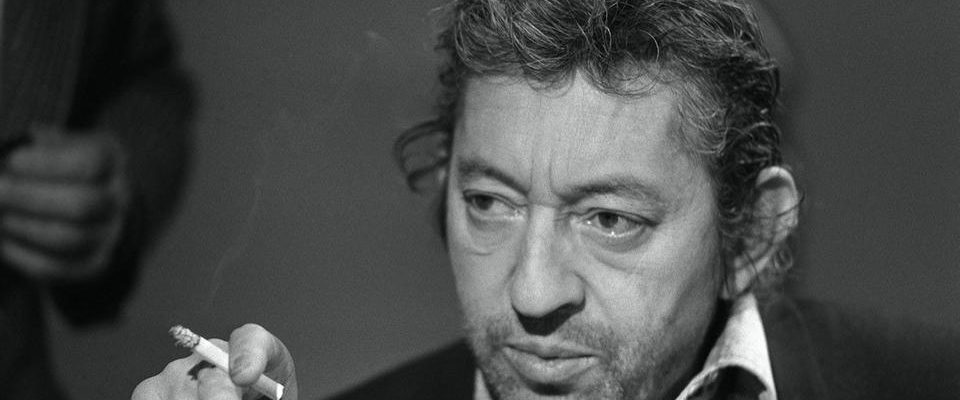As the Gainsbourg museum and its emblematic residence at 5 rue de Verneuil open this Wednesday, September 20, here are five anecdotes about the artist that you may not have known.
Three songs by Serge Gainsbourg competed in Eurovision
Singer-songwriter, Serge Gainsbourg is the originator of more than 400 songs written for himself and for others. Three of them competed at Eurovision. If everyone knows the title “Wax doll, sound doll”, which won France Galle the competition in 1965 on behalf of Luxembourg, two other titles were performed there.
In 1967, Minouche Barelli, candidate representing Monaco, sang “Boum-Badaboum”. A title composed and written by the Man with the Head of Cabbage, with whom she ranks fifth. Shortly before the death of Serge Gainsbourg in 1991, this time it was Joëlle Ursull who performed, in 1990, a song whose lyrics were signed by Gainsbarre. With this song entitled “White and Black Blues”, the young woman who represents France comes second in the competition.
“Adolphe” by Benjamin Constant was his “ideal” book
In October 1968, during an interview recorded for the program Bibliothèque de Pocket, the sequence of which was preserved by theINA, Serge Gainsbourg shared his literary tastes. Asked about the books that marked his youth, the artist, then aged 40, explained that “Adolphe”, a work by Benjamin Constant published in 1816, was his “ideal book”. “The most beautiful book I have ever read,” he said. A work with a style of “absolute purity”, according to the composer.
The only completed novel by Benjamin Constant, “Adolphe” tells the story of a destructive romantic relationship, while its narrator is unable to break up or love. A character to whom Serge Gainsbourg seemed to feel close. “I am Adolphe, finally I became one,” he explained at the time.
he received a César for best original music four years after his death
Serge Gainsbourg has written numerous film scores and several of his titles have served as theme songs for landmark feature films. Among them, his disco hit “Sea, Sex and Sun”, released in June 1978, which became the theme song for the film “Les bronzés” six months later, or even “Elisa”, unveiled in 1969 and adopted by Jean Becker for his feature film eponymous film, released in 1995. The following year, the film won the César for best music. A title which goes to three composers including Serge Gainsbourg, posthumously.
Note, Serge Gainsbourg also received the album of the year prize in 1985 for “Love on the Beat”, during the first edition of the Victoires de la Musique, as well as a Victoire d’Honneur, five years later.
One of his paintings was sold for nearly 135,000 euros
Before becoming a singer-songwriter, Serge Gainsbourg once wanted to pursue a career as a painter and enrolled in Fine Arts at the age of 17. Although he ultimately turned to music, Serge Gainsbourg signed several paintings, the majority of which he destroyed. In November 2021, during an auction of objects that belonged to Juliette Gréco, one of them was sold for 134,400 euros, AFP reported at the time.
Serge Gainsbourg offered this painting to Juliette Gréco in 1959, after a show in which they had participated jointly. Serge Gainsbourg confided to him at the time that “painting is (his) one true love”. “A few days later, Serge came to my house and told me: ‘I burned everything, destroyed everything, I’ll give you this. It’s the only one left…'”, the singer recounted later . Called “Children in the square”, the painting represented Gainsbourg and his sister as children. It was among five paintings by the artist still in circulation, according to his entourage.
Serge Gainsbourg wore the yellow star as a child
Son of Jewish immigrants of Russian origin, Serge Gainsbourg was a teenager under the Vichy regime. Installed in Paris with his family in the early 1920s, the young boy was forced to wear the yellow star under the occupation. He then fled the Capital and crossed the demarcation line with false papers, at the age of 15, to reach Limoges and be hidden in a private establishment, as his older sister Jacqueline told Paris Match, in 1991, during of the disappearance of his brother.
A period to which the artist returned, as always in his own way. “I’ve been on borrowed time since I was born. When my mother was pregnant, she wanted to have an abortion. In 1942, the militia almost arrested us. My mother saved my two sisters and me. Since then, I have grown up under a lucky yellow star, the one I wore during the occupation. What I have experienced since then is a gift,” reported AFP the day after the death of the Man with the Cabbage Head, who died on March 2, 1991.

